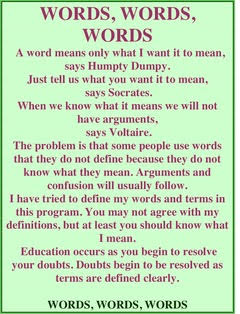


#Another word for things that are not important how to
Translation teaches learners about language, but not how to use it. Under each heading we can consider some of the concerns expressed. We can consider possible problems with using translation by looking at possible negative impact on learners and then on teachers.

Subsequent ‘humanistic' methodologies such as the Silent Way and Total Physical Response and communicative approaches moved even further away from the L1, and from these arise many of the objections to translation. Like the Direct Method, the later Audio-Lingual Method tried to teach the language directly, without using the L1 to explain new items. In the Direct Method the teacher and learners avoid using the learners' native language and just use the target language. The Direct or Natural Method established in Germany and France around 1900 was a response to the obvious problems associated with the Grammar Translation Method. Unsurprisingly, new methodologies tried to improve on this. This was not a positive learning experience for many: as well as learners memorizing huge lists of rules and vocabulary, this method involved them translating whole literary or historic texts word for word. It was a key element of the Grammar Translation Method, which was derived from the classical method of teaching Greek and Latin. The history of translation in ELT methodologiesĪs mentioned above, translation was the basis of language teaching for a very long time, and then rejected as new methodologies started to appear. Modern translation activities usually move from L1 to L2, (although the opposite direction can also be seen in lessons with more specific aims), have clear communicative aims and real cognitive depth, show high motivation levels and can produce impressive communicative results. As Duff (1989) says, teachers and students now use translation to learn, rather than learning translation. However, it and these other abandoned activities are now a feature of many communicative classrooms and successful aids to learning, although the approach to using them has changed. With the arrival and then total dominance of communicative methodologies, translation was quickly consigned to the past, along with other ‘traditional' tools such as dictation, reading aloud and drills. Translation was a significant part of ELT for a long time, and then a significant missing part for a long time also. It concludes with some observations about how to make translation tasks successful, and some activities. It then considers some of the many objections ELT thinkers and practitioners have had to translation, and some of the possible benefits of its use.

The article starts by looking at what we mean by translation as an activity in the language classroom, and then briefly reviews the history of translation in language learning within the framework of various methodologies. This question has been discussed elsewhere on the Teaching English site. It does not consider the role of the L1 as a teaching tool, for example for classroom management, setting up activities, or for explaining new vocabulary.


 0 kommentar(er)
0 kommentar(er)
